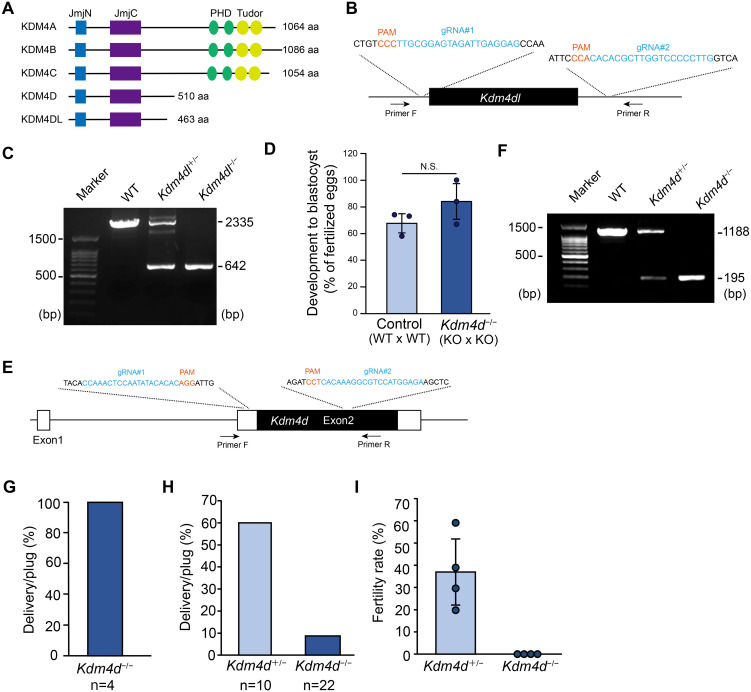Fig. 1.
Kdm4dl is dispensable for development while Kdm4d is required for male fertility. (A) An illustration showing the protein structure of the Kdm4 family genes. N-terminal JmjN and JmjC domains as well as C-terminal PHD and Tudor domains are indicated. aa, amino acids. (B) Schematic diagram of Kdm4dl gene knockout by CRISPR-Cas9 system; gRNA#1 and gRNA#2 were used to induce genomic deletion. Primers indicated were used for genotyping. (C) Representative genotyping PCR results of Kdm4dl mutant mice. (D) Developmental efficiency to the blastocyst stage. In vitro fertilization was performed with mice with indicated genotypes (n = 3). Mean ± SD are indicated. (E) Schematic diagram of Kdm4d gene knockout by CRISPR-Cas9 system as in (A). (F) Representative genotyping PCR results of Kdm4d mutant mice. (G) Delivery rate of Kdm4d−/− female mice. Kdm4d−/− female mice were crossed with wild-type males; n indicates the number of plugs examined. Four independent female mice were used. (H) Delivery rate of Kdm4d mutant male mice. Kdm4d mutant male mice were crossed with wild-type females; n indicates the number of plugs examined. Five heterozygous and six homozygous male mice were used. (I) Fertility rate upon in vitro fertilization. Wild-type eggs and sperms from Kdm4d mutant mice were used for IVF and pronuclear formation was examined. Mean ± SD are indicated. Four independent male mice were used for each experimental group.

